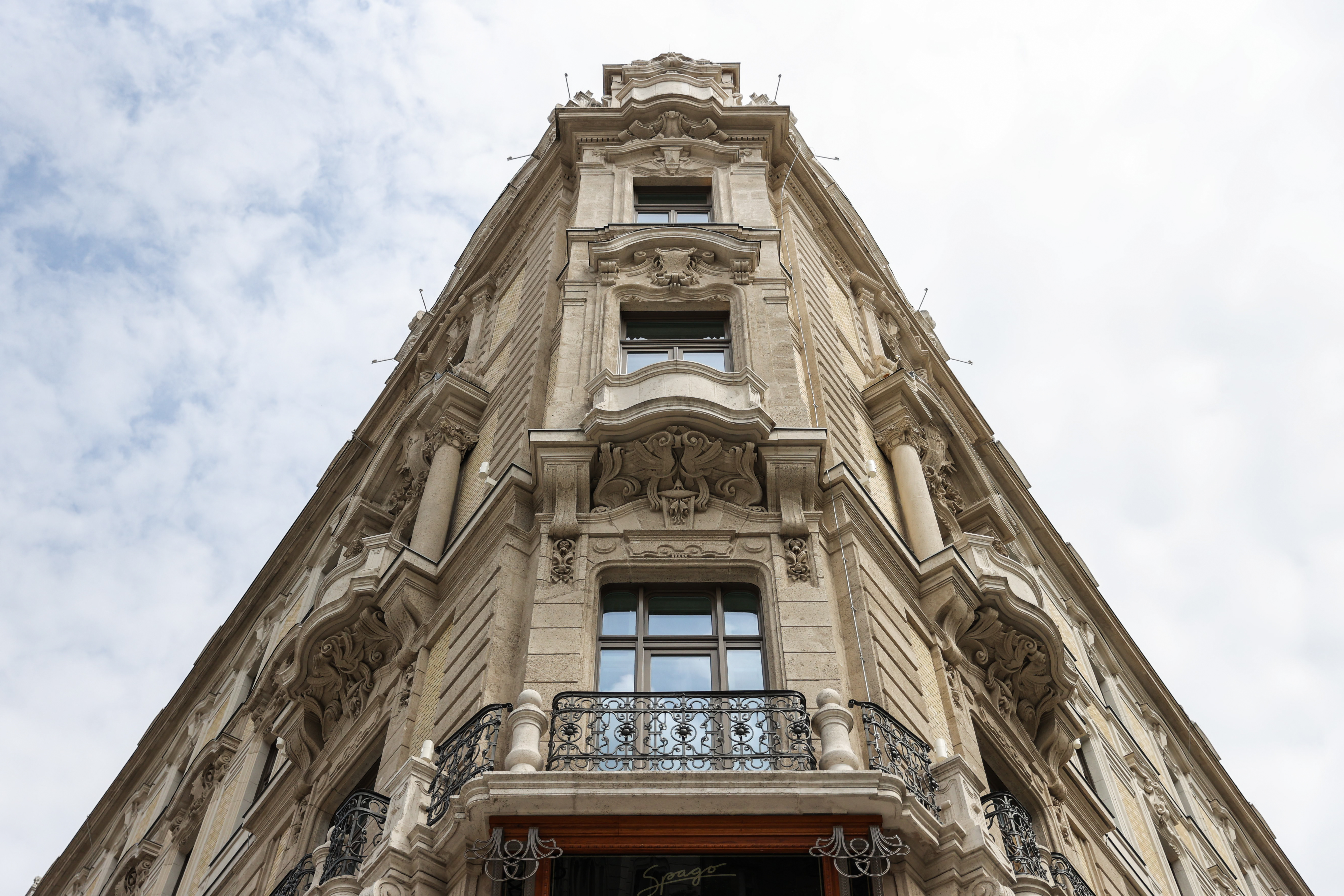The atmosphere
and image of Pest in the late 1800s were completely changed by the construction
of Elizabeth Bridge, and many buildings were demolished.
Of the
plots left vacant in the 1880s, the two most valuable were bought by the wife
of Archduke Joseph Karl, Princess Clotilde, who envisaged elegant palaces standing
at the gates of the future bridge.
With this in mind, the commission was given to two young, talented architects of the day who had already shown their advance thinking in the design of the New York Palace.
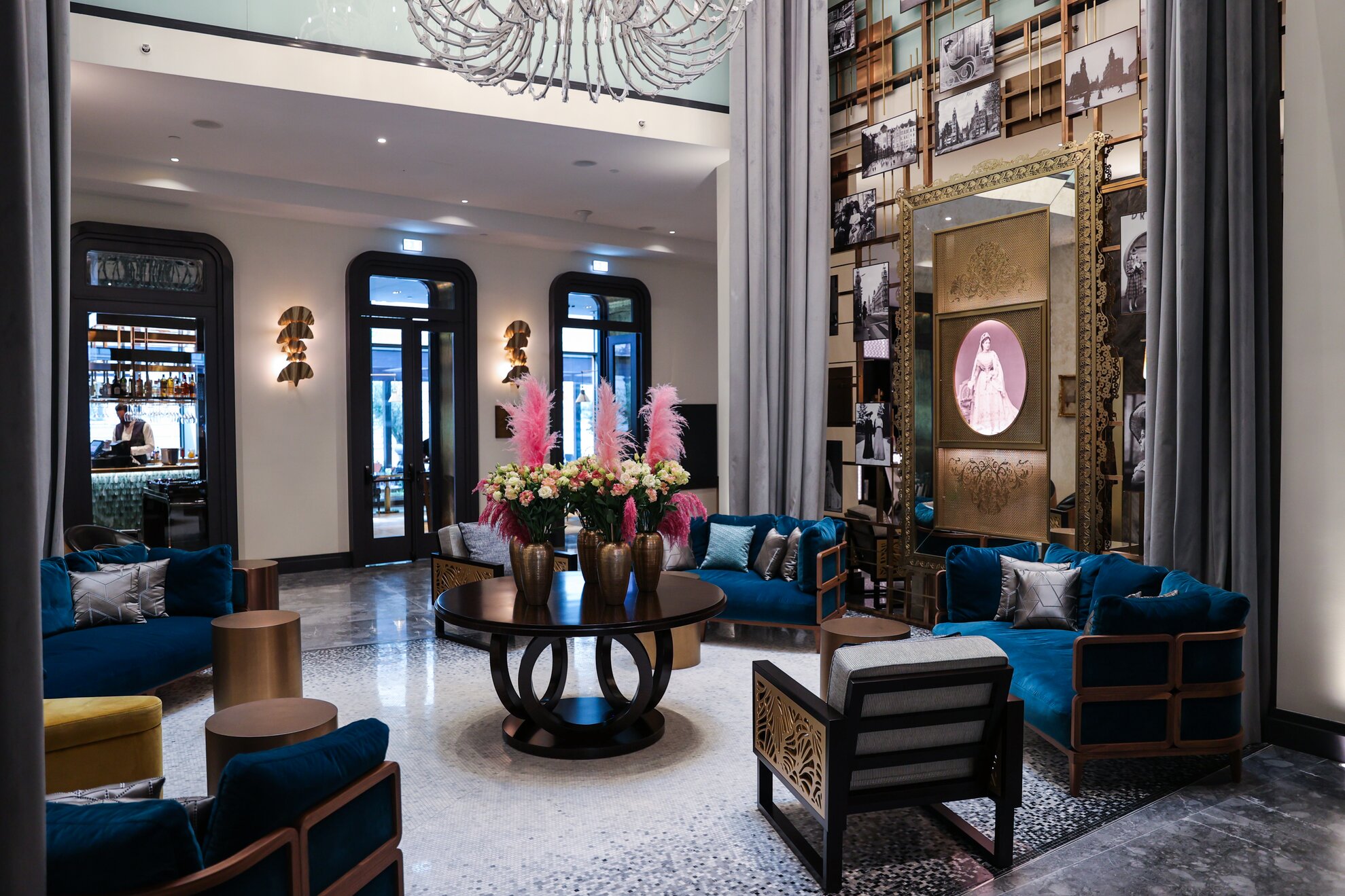
The eclectic Klotild Palaces, which rise like a graceful princess on either side of the road, were designed by Flóris Korb and Kálmán Giergl, the same duo later behind Franz Liszt Music Academy. The most famous craftsmen of the period also worked on the building, namely the renowned trinity of Zsolnay, Gyula Jungfer and Miksa Róth, masters of ceramics, wrought iron and stained glass respectively.
The architects quickly
built the two mirror-symmetrical palaces in three years, a major feat, especially
because they were experimenting with the novelty of an iron structure, The
building was so innovative, in fact, that lifts were installed for the first time in
Budapest.
Business premises, associations and companies were located on the
ground floor and mezzanine level of the southern palace, while rented
apartments were located on the upper floors. The 48-metre-high corner
towers were immediately distinctive.
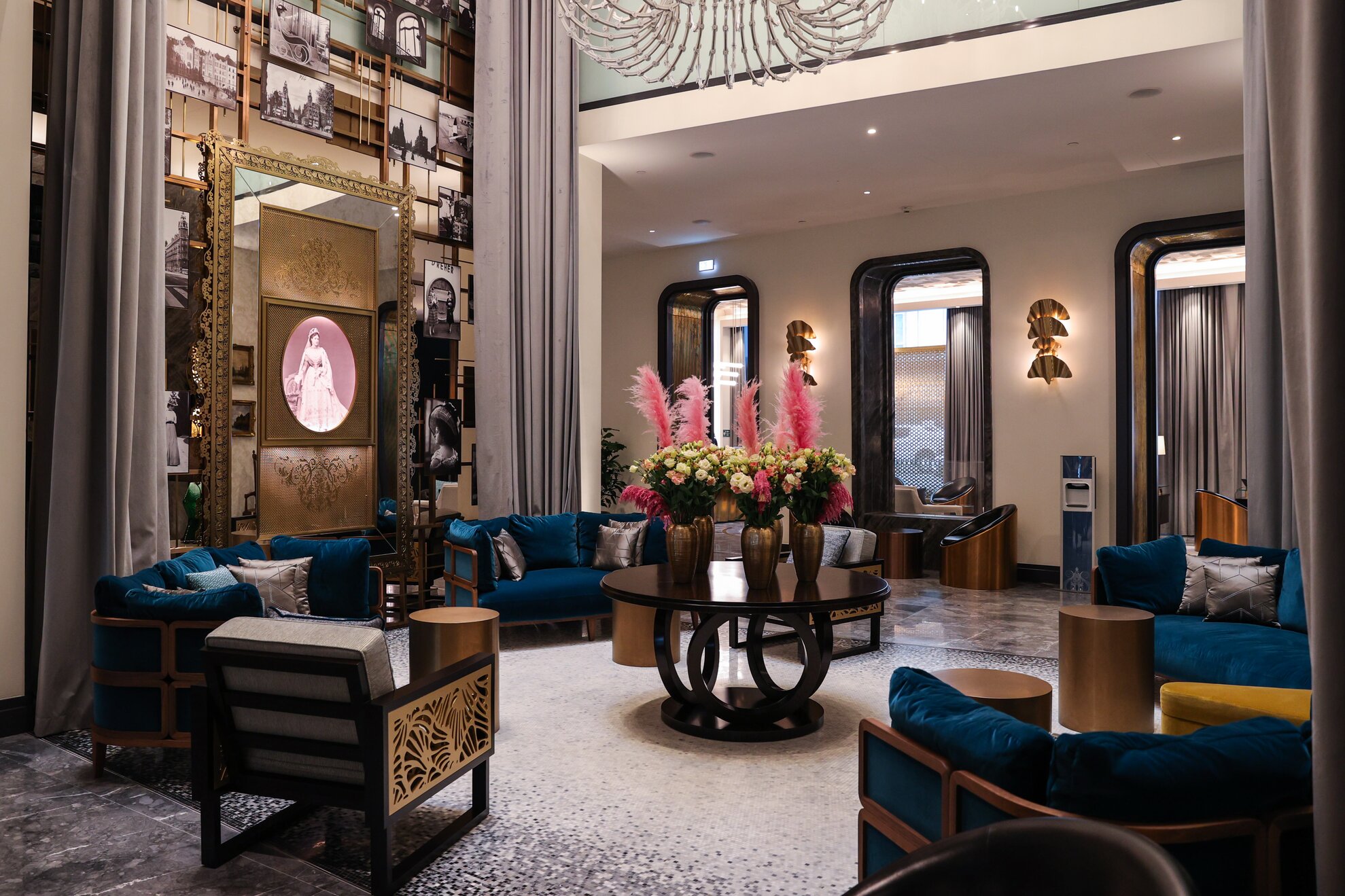
One of novelist Gyula Krúdy’s favourite cafés operated here, where he wrote the revered stories of Szindbád at his usual cosy table, while artists József Rippl-Rónai and Pál Szinyei Merse were also frequent guests at the Belvárosi Kávéház – when they weren’t gathered at the famous Japán Kávéház.
Due to their central location, the buildings did not escape damage during the Siege of Budapest of early 1945 – the roof collapsed, the ground floor rooms burned down and the carved portals were destroyed. The façade was renovated in the 1960s and the café was reopened after World War II, the first business to relaunch, in fact, but the buildings slowly faded over the years.
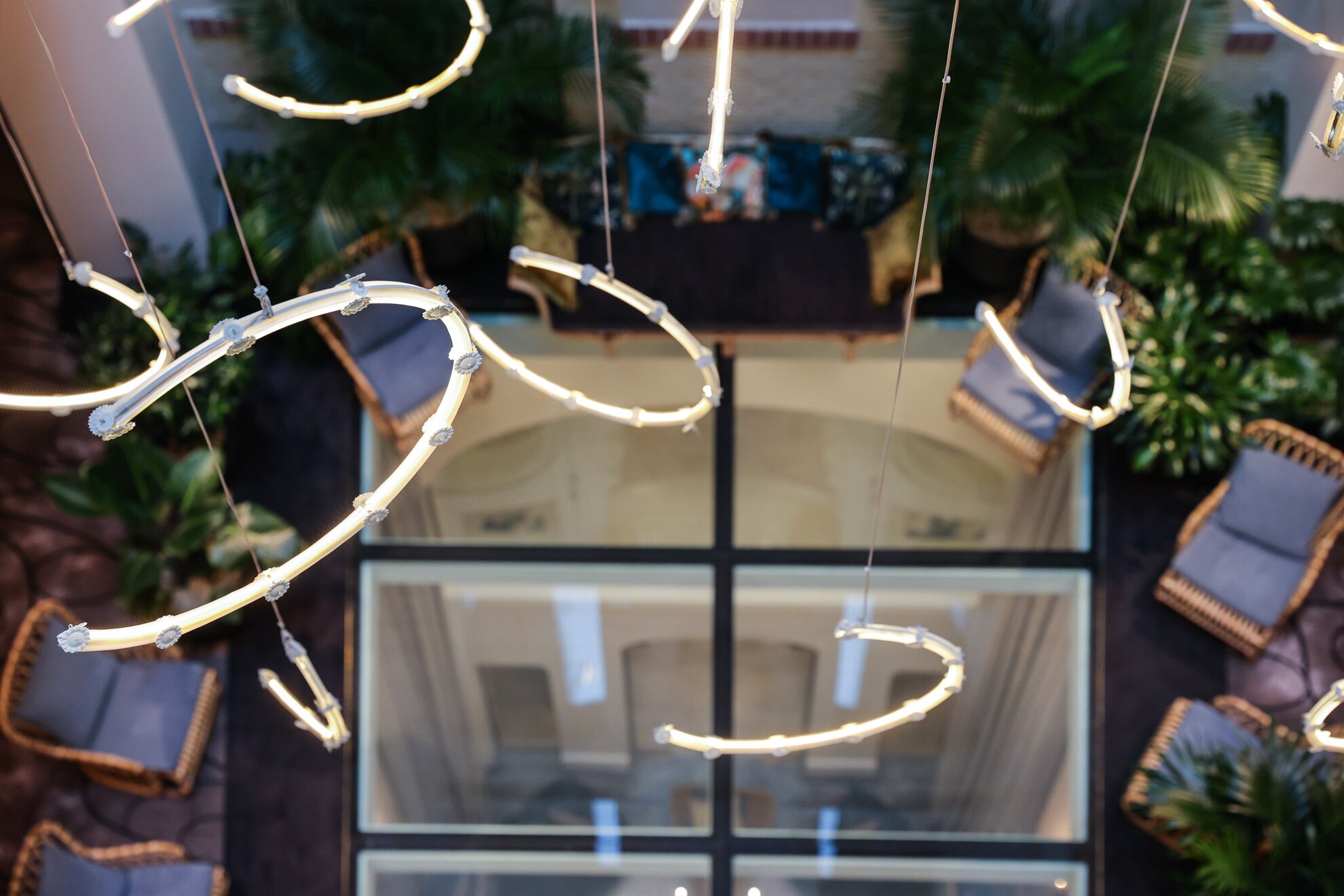
The southern Klotild Palace has always been known as the Matild, although there is no single reason why. The Habsburgs had three Mathildes: a medieval Bavarian princess, another who set herself alight with a cigarette at the age of 19, and the ninth child of Buda-born Marie Valerie, but there is no evidence that they named the southern building because of any specific one of them.
Today's luxury Matild Palace hotel contains 120 years of history between its walls, as illustrated by the nine-metre-high photo mural of Clotild and sundry Habsburgs bisecting the relaxed lobby area.
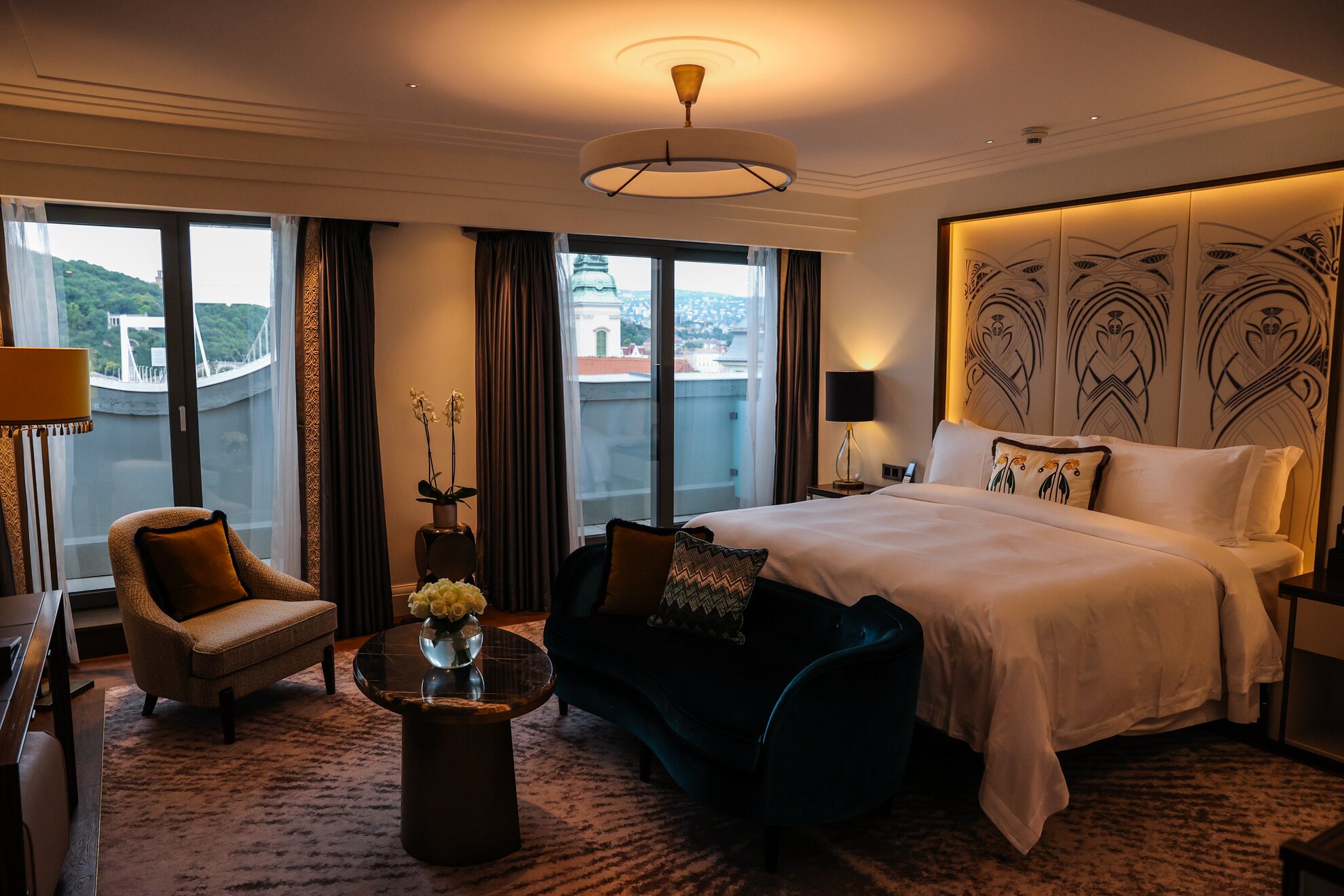
For the renovation, they wanted to combine the atmosphere of Pest at the beginning of the 20th century, the original splendour of this listed building and the elegance of a five-star luxury hotel – but the mood of the surrounding residential blocks, with their long corridors, echoes in the atrium.
Everything that
could have been restored from the original – the wrought-iron gates, Róth’s stained-glass
windows, the terrazzo cladding – has been, while elements since lost were
re-manufactured based on archive photos and old plans.
Hungarian motifs also
return to the rooms and communal spaces of the Matild Palace: the familiar floral
symbols on the pillows and bedrests, the bathrooms featuring mosaic tiles
reminiscent of the Gellért Baths.
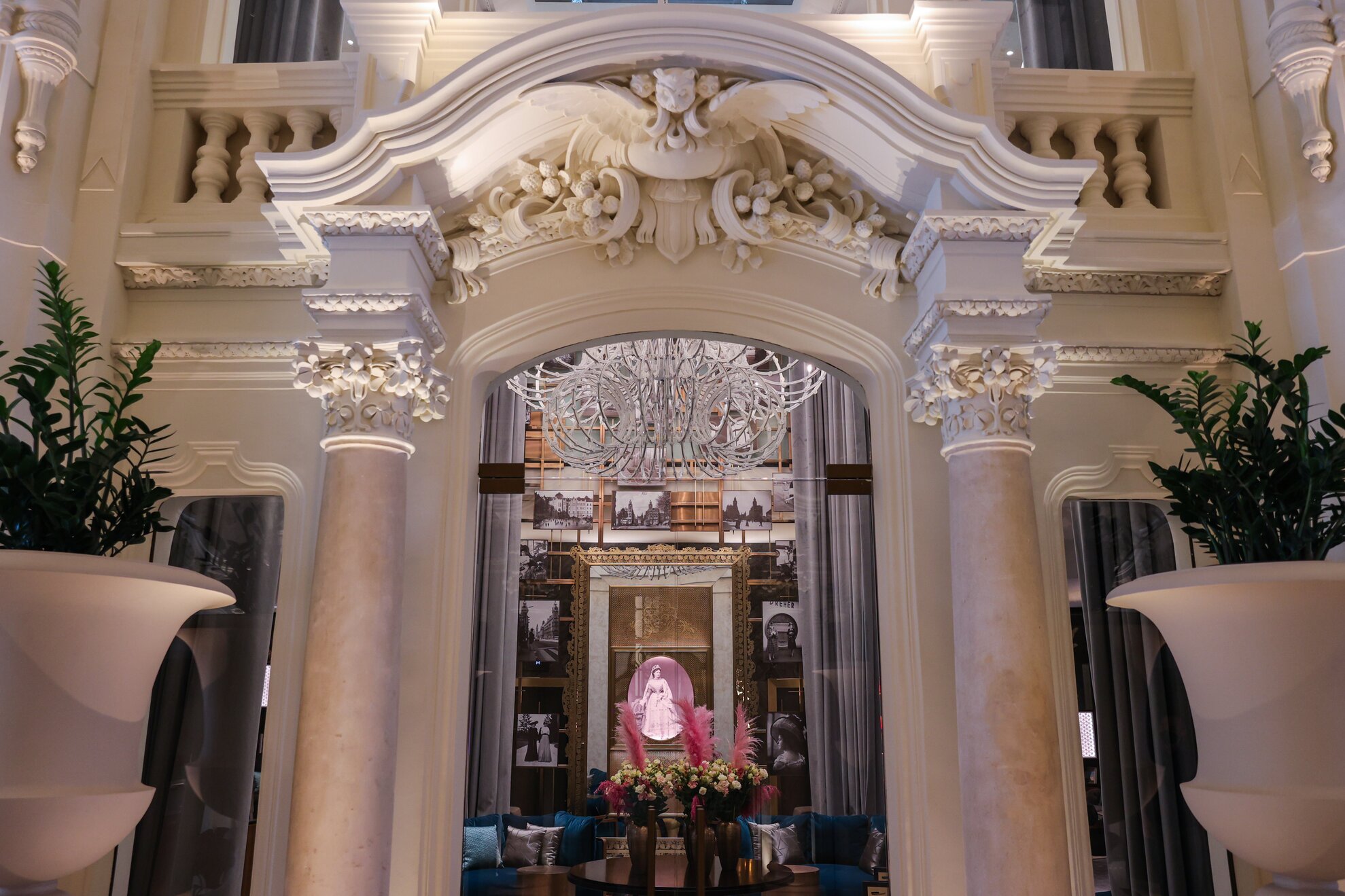
Interior aesthetics
were take care of by Maria Katsarou Vafiadis, founder and MD of London-based MKV
Design, behind the transformation of hotels from the Alps to Bangalore.
The five-storey
Matild Palace has 111 rooms and 19 suites, all imbued with luxury and elegance,
although there’s a surprise along the top floor, lined with 14 studio
lofts more usually seen in remodelled factory buildings than in Neo-Baroque landmarks
of the early 1900s. Each is embellished with original Hungarian contemporary
art, especially curated for the project.
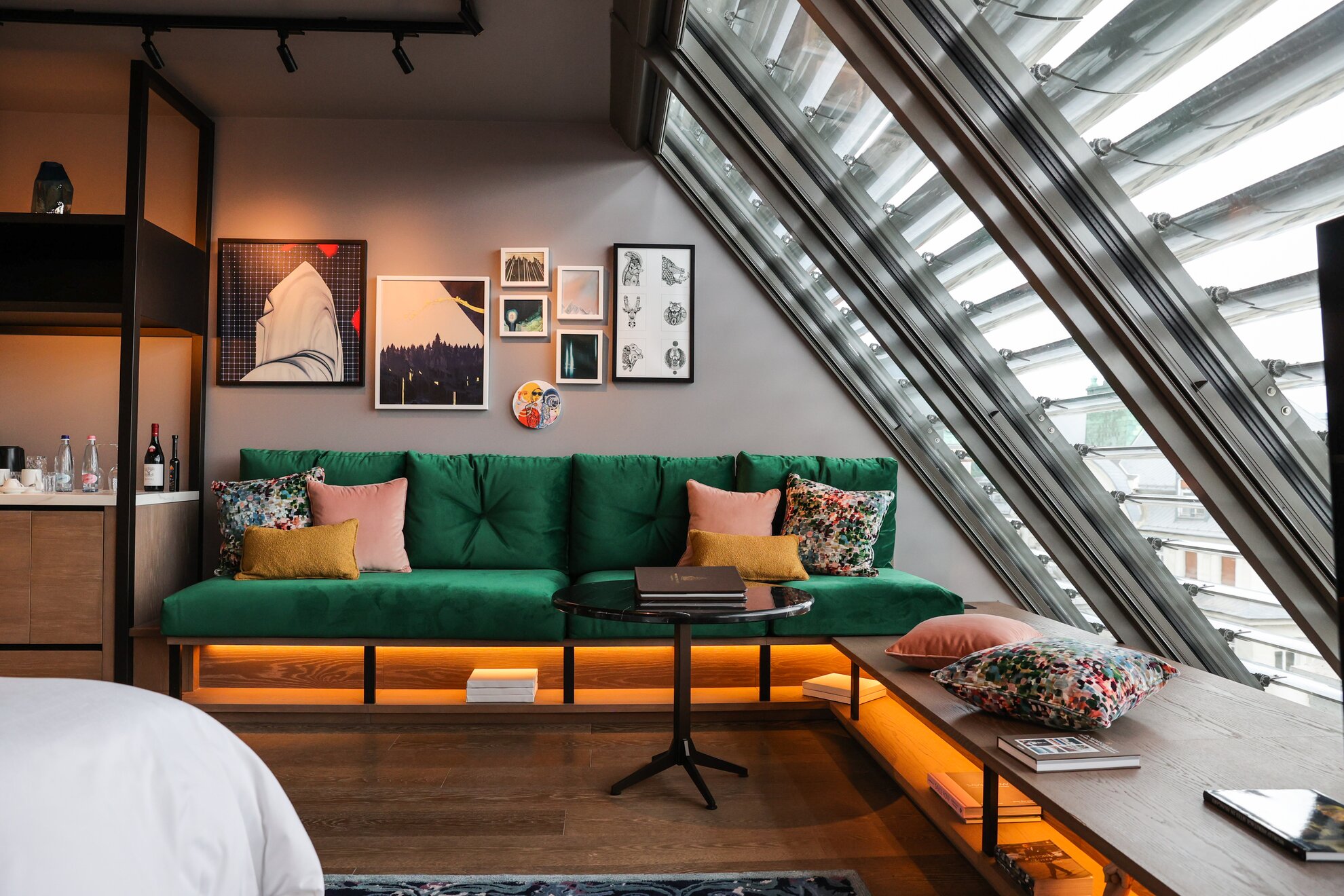
After it first opened, this building was the centre of social life, where various groups gathered in the ground-floor café but the attics housed the studios of painters and photographers, with a hidden room for secret trysts.
Entertainment and leisure also breathe new life into the old building, and put the hotel back into the flow of downtown life. Starting with Spago, the hotel’s signature ground-floor terrace restaurant, all aspects of gastronomy here is overseen by world-famous chef Wolfgang Puck, returning to his Central-European roots after making his name in Hollywood.
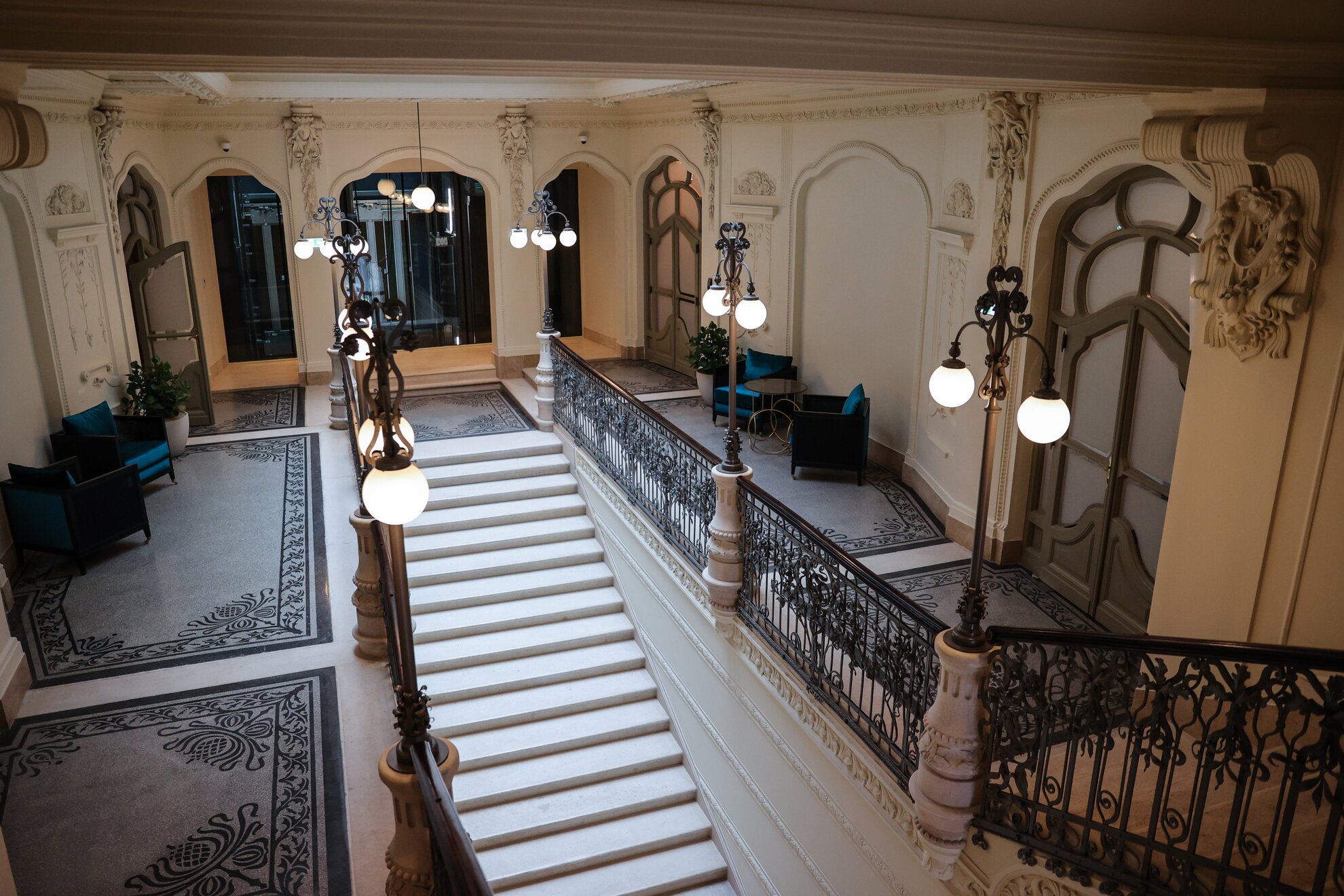
Opposite Spago, across the passage as you enter, the Matild Café & Cabaret owes its look to lucky coincidence. At some point in the renovation, the former chief engineer was invited to take a look around. Remarking that not only was there a stage in the middle but it had been buried below floor level, he gave the designers the idea not only to find it, but to raise it, renovate it and make it the centrepiece of the spacious room.
When the café/cabaret opens in the autumn, performances will be scheduled, evoking Budapest’s Silver Age between the wars, when live radio broadcasts were beamed from this very space. A table at gallery level allows you to observe proceedings from above.
Pride of place,
though, belongs to The Duchess sky bar, guarded by exotic giraffes, tables fashioned
like peacocks, the view unsurpassable outside.
Much of what you see from this
vantage point would not have been in place when the building first opened – the
sleek, post-war version of Elizabeth Bridge from the 1960s, the Statue of Lady Liberty
atop Gellért Hill from 1947 – but there’s no mistaking the dome of the Basilica,
completed shortly after the matching pair of Klotild Palaces was unveiled in
1902.
Matild Palace, a Luxury Collection Hotel, Budapest
District V. Váci utca 36
